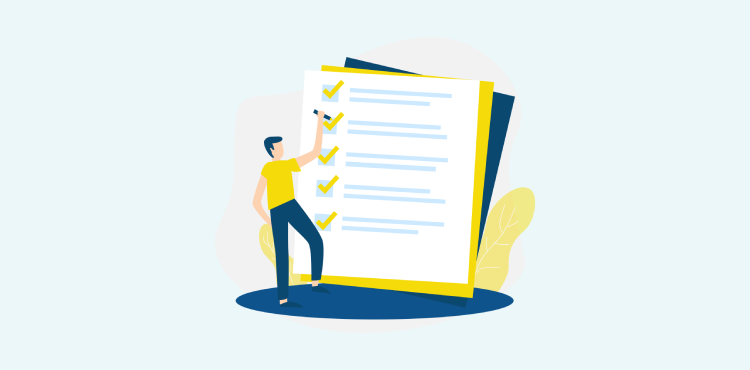When you hire new talent, you need to ensure that they feel comfortable enough to work with you along the lines of your brand ethos. In this article, we show you how to create a comprehensive employee on-boarding checklist to make for a smooth transition.
If you want to maximise the quality of the new talent you’re bringing in, you need to ensure that they hit the ground running. This involves preparing the new employee adequately for the role they’re going to play.
Additionally, you need to optimise their new professional environment so that they can acclimatise as quickly as possible. When everything is in place, the new employees can set forth using their talents for the good of your company.
You need to follow a comprehensive plan, ensuring that you don’t leave any glaring holes when introducing the new prospect into a hitherto foreign work environment. On-boarding new employees can be a challenging aspect of managing this valuable human resource. As straightforward as this sounds, it can be a demanding undertaking.
Worry not. We have taken that burden upon ourselves. Below, we’ll take you through the different steps you can take to create a functional employee on-boarding checklist.
What should your employee on-boarding checklist contain?
The on-boarding process is as crucial to the success of your business as it is to the productivity of your new hires.
If you do it right, the process ensures that your new employees feel right at home in your company. When they’re properly settled, they will give their all for the organisation because they had an excellent initiation.
Additionally, a great on-boarding process increases employee motivation because new hires know what you expect from them. Consequently, you benefit from the increased productivity.

But we digress.
Here are the boxes you should tick off your employee on-boarding checklist. We have categorised them according to the different phases of the process.
Before the new employee’s first day at work
An effective on-boarding process starts well before the employee clocks in for the first day of work. This allows the new hire to get acquainted with the company before they even step foot on the premises.
Bombarding them with paperwork on the first day is overwhelming; start well before so that the first day isn’t so much of a shock.
Here’s what your pre-first day employee on-boarding checklist should look like.
- Forward relevant paperwork: This is an excellent time to send the offer letter as well as the welcome letter from top management. The paperwork also contains digital tax forms and the employee handbook.
- Set up the employee’s workspace: Your new hire wouldn’t appreciate it if they came in on the first day and they don’t have where to sit. Therefore, prepare their desk, chair and computer.
The employee should find everything in order so that they can set about without any limits to their productivity.
- Inform current employees of the new arrival: You should spread the word that a new colleague is coming in. This allows your current employees to prepare for the new arrival.
They might organise a small welcome party or any other activities as dictated by the company culture.
- Schedule first week activities: A plan for the first week keeps you and the new employee on schedule. You both know the different activities and execute them on time.

Image: Pexels
Employee’s first day
With the above items on the employee on-boarding checklist ticked off, you need to focus on the first day your new colleague shows up.
Here’s what should be on your list for that day.
- Assign a point person: Select a colleague that will help your new hire acclimatise to the new environment, ideally work in the same department or team.
They help the new employee with whatever they need; which professional conventions to follow when doing certain activities and anything else that needs clarification.
- A tour of the premises: When the new person shows up on the first, they don’t know where to go. Therefore, you should help them become familiar with the layout. Use this ideal time to introduce them to their new colleagues.
Additionally, you can fill them in on any informal conventions. This can be about breaks, lunchtime shifts and anything else that might make them feel out of place.
- Go through the first week’s agenda: After the tour, you can go through the schedule for the first week so that the new hire knows what to expect.
This should be a thorough explanation of all activities, enabling you to dispel any doubt in the employee’s mind about what’s expected of them.
And in any case, if they have any doubts or queries, they can always get in touch with the point person for clarification.
The first week of work
The first day was mainly about physical orientation in the workplace and the basics. The first week goes a bit more in-depth.
- Initiate employee into company culture: The company culture governs how the employees conduct themselves. During the first week, introduce the new hire to these practices.
- Outline essential procedures: Show the new employee how to carry out the critical roles in their job description. This helps them to mesh well with other employees so that everything is uniform.
- Schedule check-ins for the coming weeks and months: Set up subsequent check-ins where you’ll gauge acclimatisation and any other queries and progress.
After the first month
The first month is a long enough time for the new employee to discover what works for them and what doesn’t.
This is what should be on your employee on-boarding checklist for this period.
- Send surveys: Send short surveys to find out how the employee is coping. This also points out shortcomings in your on-boarding process.
- Review past and upcoming tasks: Take a look through the past assignments and identify where the employee can make improvements. Outline expectations for the forthcoming tasks.
- Check on payroll activity: The employee will have received their first payment. This is an ideal time to find out if they had any problems collecting or cashing it.
In Summary
With a well-crafted employee on-boarding checklist, your new hire breezes through the first period at your company. Instead of having to jump through several hurdles on the first day, they’ll fit in with the team in a short time.
An optimised on-boarding process ensures that a new employee has an excellent working experience and is motivated to give their all.



